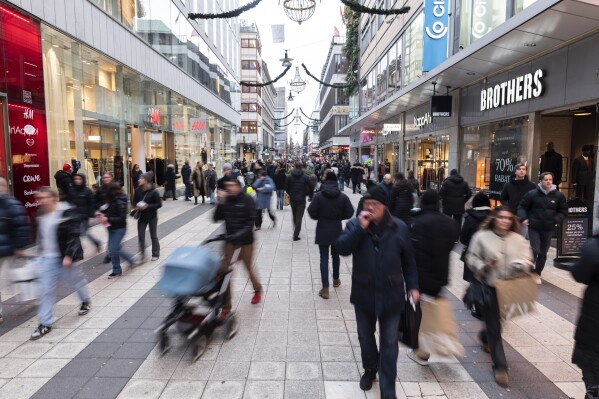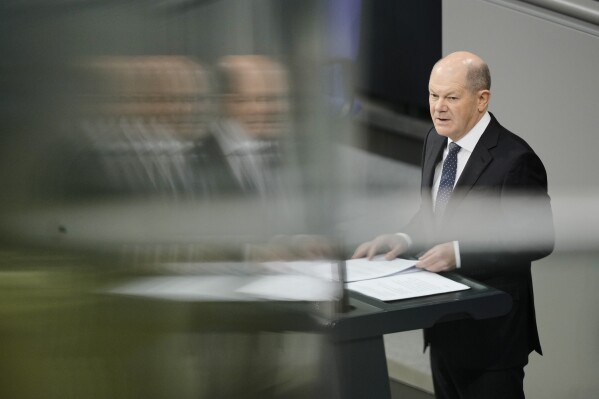US economic growth for last quarter is revised up to a 5.2% annual rate
WASHINGTON (AP) — Shrugging off higher interest rates, America’s consumers spent enough to help drive the economy to a brisk 5.2% annual pace from July through September, the government reported Wednesday in an upgrade from its previous estimate.
The government had previously estimated that the economy grew at a 4.9% annual rate last quarter.
Wednesday’s second estimate of growth for the July-September quarter confirmed that the economy sharply accelerated from its 2.1% rate from April through June. It showed that the U.S. gross domestic product — the total output of goods and services — grew at its fastest quarterly rate in nearly two years.
Consumer spending, the lifeblood of the economy, rose at a 3.6% annual rate from July through September — still healthy but a downgrade from the previous estimate of 4%. Private investment surged at a 10.5% annual pace, including a 6.2% increase in housing investment, which defied higher mortgage rates.
 The world economy will slow next year because of inflation, high rates and war, OECD says
The world economy will slow next year because of inflation, high rates and war, OECD says
 Sweden’s economy shrinks in the third quarter to signal that a recession may have hit the country
Sweden’s economy shrinks in the third quarter to signal that a recession may have hit the country
 The worst-performing major economy also faces a budget crisis. Germany’s leader vows fixes, but how?
The worst-performing major economy also faces a budget crisis. Germany’s leader vows fixes, but how?
The economy also received a lift from companies building inventories in anticipation of future sales, which added 1.4 percentage points to quarterly growth. Also driving the third quarter growth was an uptick in spending and investment by governments at all levels — federal, state and local.
The U.S. economy, the world’s largest, has proved resilient even as the Federal Reserve has raised its benchmark interest rate 11 times since March 2022 to fight the worst bout of inflation in four decades. Those higher interest rates have significantly increased consumer and business borrowing costs. But they have also helped ease inflationary pressures: Consumer prices rose 3.2% last month from 12 months earlier, a marked improvement from the 9.1% year-over-year inflation recorded in June 2022.
The U.S. job market is cooling from the red-hot levels of the past two years. But it’s still healthy by historical standards: Employers are adding an average of 239,000 jobs a month this year. And the unemployment rate has come in below 4% for 21 straight months, the longest such streak since the 1960s.
The combination of easing inflation and resilient hiring has raised hopes the Fed can manage a so-called soft landing — raising rates just enough to cool the economy and tame price increases without tipping the economy into recession.
“We continue to forecast ongoing expansion in economic activity, but the pace should slow quite significantly” in the current fourth quarter),’' said Rubeela Farooqi, chief U.S. economist at High Frequency Economics. ”We anticipate a deceleration in household spending, not only on payback for an unusually strong third quarter but also from the cumulative effects of monetary policy tightening.’'
Disclaimer: The copyright of this article belongs to the original author. Reposting this article is solely for the purpose of information dissemination and does not constitute any investment advice. If there is any infringement, please contact us immediately. We will make corrections or deletions as necessary. Thank you.






